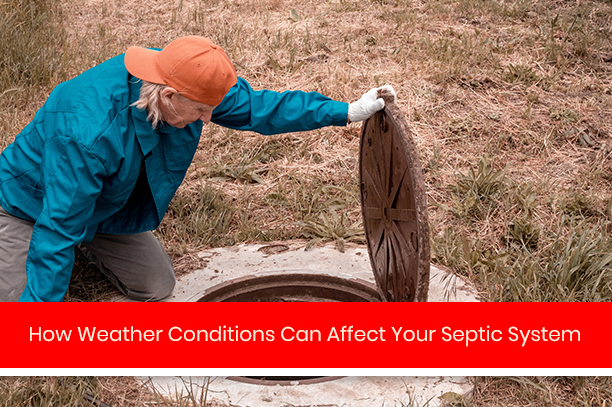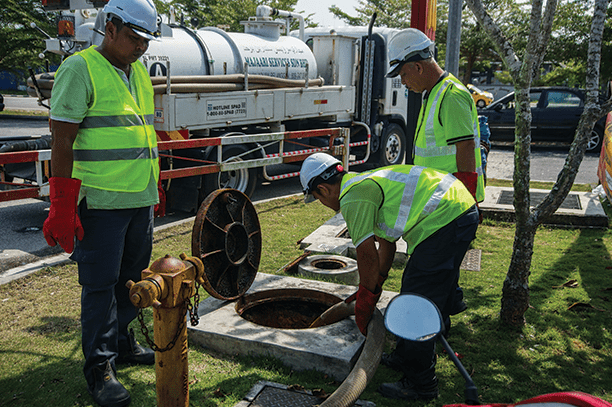Most property owners know that what they flush or pour down the drain impacts their septic system, but washing clothing is frequently forgotten. Although septic systems can handle washing machine wastewater, owners must know how to wash clothes properly to avoid problems in their tanks, pipes, or drain fields. Check out these laundry recommendations to avoid septic system issues like tank overload and clogged lines before starting your next load.
How Does Laundry Affect the Septic System?
Washing machines can seriously harm your septic system if you’re not careful. Review and practice the washing advice below to ensure your septic system functions properly and avoids needing urgent repair.
Choice of Laundry Detergent
Although you might think adding a little additional detergent to your laundry is safe, using too much detergent can seriously affect septic systems. To safely release organic waste into the tank’s drain field, septic tanks depend on colonies of helpful bacteria.
Most laundry detergents contain purifying agents like phosphates and surfactants that can kill these necessary microorganisms and hinder the tank’s ability to digest waste properly. Detergents are often diluted in laundry water to the point where they won’t damage bacteria, but using excessive amounts can expose germs to lethal concentrations of these chemicals. Using too much detergent might be dangerous if you rely on detergent granules. If you use too much, the undissolved washing powder will clump inside your septic system. These powdery clumps can seriously clog the system’s inflow lines, resulting in sewage and wastewater backing up your house.
You shouldn’t have any of these issues if you use the recommended amount of detergent for each laundry load. To be safe, pick liquid laundry detergents without phosphates, chlorine, or nonylphenol ethoxylate (the surfactant that is most frequently present in laundry detergent).
If you want to hire a septic service in Sherwood, contact AOS Septic for their professional septic system service.
Powder Vs. Liquid Detergent
The argument between powdered and liquid laundry detergent for septic tanks is still debatable. However, the detergent’s constituents are more significant than the distinction between powder and liquid.
Fillers in powdered detergents, like clay or powdered plastics, can accumulate in the septic tank and cause obstruction. Biodegradable laundry detergent granules do not bring on that accumulation.
Additionally, liquid detergents must be biodegradable. Avoiding chlorine bleach and other harsh chemicals is especially important since they might harm the beneficial bacteria in septic tanks that break down waste.
Overloading the system
Washing machines require a lot of water, and washing a lot of laundry at once can tax your septic system. If excessive wastewater flows into the tank quickly, the tank might have to release waste into the drain field before being digested. It may result in severe
issues with drain field contamination and clogs are typically expensive to fix.
Your septic tank’s holding capacity will greatly impact how much laundry you can get done each day. If your tank is sizable, you need to be able to wash
a day’s worth of average-sized loads without incident. However, if you inhabit an old house, you should space out your laundry loads because older septic systems frequently have smaller tanks.
Using an Older Washing Machine
The problem could be lying in the use of old washing machines. Buying a more recent washing machine is another technique to prevent filling up your tank with laundry water. The energy efficiency standards for modern washing machines are very high and use much less water than previous ones. A more recent washing machine can enable you to do laundry more regularly without worrying about septic system issues, albeit they might be pricey.
If you adhere to these straightforward guidelines, running your washing machine beside a septic tank system shouldn’t present any problems.
Regularly Maintaining Lint Filters
For washing machines with septic systems, cleaning the lint filter is crucial. Clumps of lint that escape from a blocked lint filter may enter the septic system and, if caught in the septic lines, may seriously clog the system.
Problems might also arise if lint gets into the septic tank system. The bacteria in the tank will not break down any non-organic fibres in the lint, such as threads from polyester or nylon garments, and they will collect at the tank’s bottom. Lint and other indigestible material can build up inside the tank over time and create a thick layer of impacted material, which reduces the tank’s total capacity.
You can contact AOS Septic for septic system installation or google septic system installation near me if you are from Sherwood or nearby areas.
Conclusion
These laundry recommendations are essential for avoiding septic system damage because emergency repairs are pricey. When numerous occupants are in the home, and the laundry accumulates quickly, it is especially crucial to exercise caution. To ensure everyone in your family knows the dos and don’ts of washing laundry when you have a septic system, go over these issues.
AOS Septic has offered top-notch customer service for decades now. We can assist if your laundry is causing issues with your septic system. We offer septic tank pumping services to ensure the smooth operation of your daily chores. Please find out more about our cleaning offerings and schedule a visit right away to have your septic tank problems solved.






